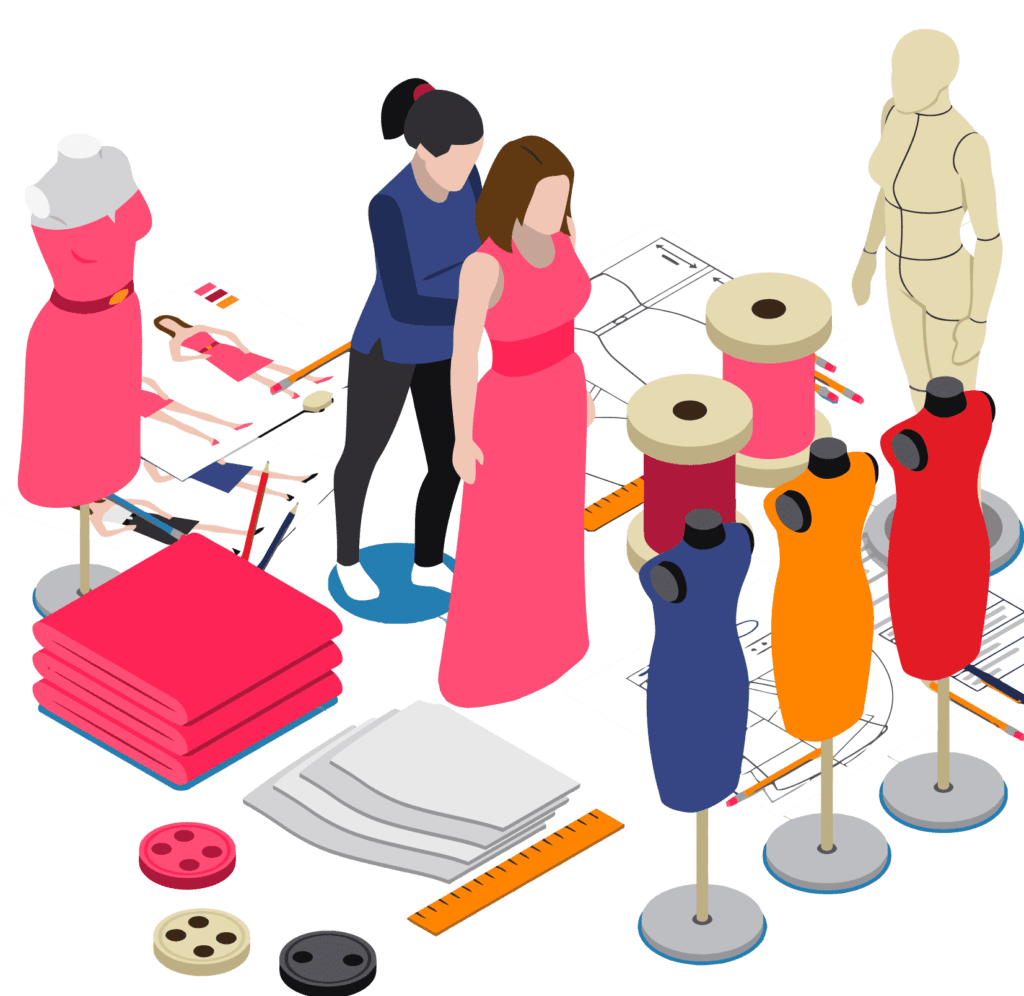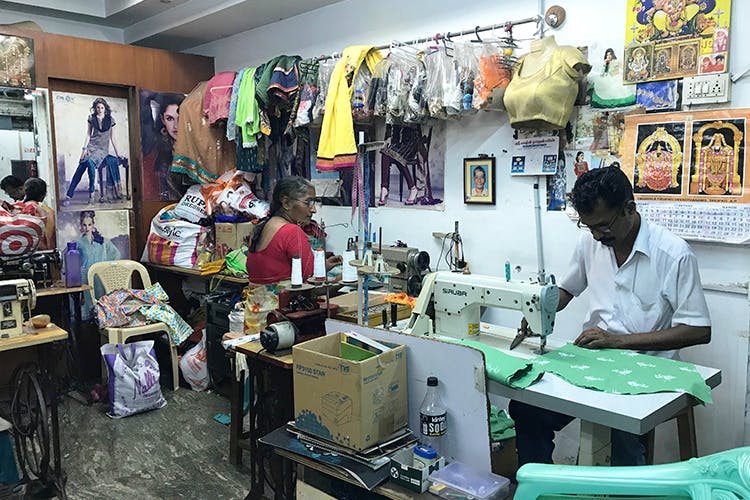Tailor Perth Specialists: Tailor-Made Solutions for Elegant Attire
Tailor Perth Specialists: Tailor-Made Solutions for Elegant Attire
Blog Article
Understanding the Tailoring Refine: From Material Option to Final Suitable for the Ideal Closet
The customizing process is a complicated interplay of art and science, starting with the vital decision of fabric choice and finishing in the exact adjustments of final installations. Each fabric kind brings one-of-a-kind high qualities that affect not only the visual charm however likewise the garment's long life and suitability for various celebrations. Understanding the nuances of tailoring methods can elevate one's wardrobe to unprecedented levels of refinement. As we discover these elements better, one must take into consideration how also the smallest details can dramatically influence the general result of one's personal design.
Value of Material Choice
Selecting the best material is vital in the tailoring process, as it straight influences the convenience, resilience, and overall aesthetic of the last garment (tailor perth). The option of textile sets the foundation for the garment's performance, design, and performance. Different materials have special buildings, such as stretch, breathability, and weight, which can substantially impact exactly how the garment drapes and fits the body
Additionally, fabric option impacts the garment's longevity and convenience of treatment. High-grade materials can stand up to damage, maintaining their look and structure with time, while lower-quality materials may result in pilling or fading. Furthermore, the appropriate fabric adds to the garment's ability to shift throughout periods and celebrations, thus boosting flexibility.
A customized item made from a proper fabric not only showcases workmanship yet likewise raises the wearer's confidence. Subsequently, comprehending the subtleties of fabric option is extremely important for any type of customizing venture. It makes sure that the final product not only meets the visual wishes of the client but additionally aligns with practical demands, consequently achieving a harmonious balance between kind and function in the customized closet.
Kinds Of Fabrics and Their Usages
Comprehending the various kinds of textiles offered is crucial for making notified choices during the customizing procedure. Each fabric has distinct features that dictate its viability for specific garments and occasions.
Cotton, known for its breathability and gentleness, is optimal for laid-back wear and summer season clothing. Its convenience enables it to be customized right into every little thing from t shirts to gowns. Woollen, on the other hand, is favored for its warmth and structure, making it a superb choice for official fits and outerwear - tailor perth. Its natural flexibility helps garments maintain shape over time.
Silk emanates luxury and is light-weight, making it excellent for eveningwear and delicate shirts; nevertheless, it needs cautious handling due to its frailty. Linen, with its textured surface, is a prominent selection for warm climates, providing a crisp and airy feel, yet it wrinkles easily, which may impact the garment's appearance.
Synthetic textiles, such as polyester and nylon, offer longevity and resistance to wrinkles, making them suitable for daily wear and energetic clothes. Comprehending these material kinds and their properties permits far better decision-making, making sure that each customized item not only fits well yet additionally straightens with the desired objective and occasion.
The Tailoring Techniques Clarified
The art of customizing relies on a variety of strategies that transform textile into well-fitted garments. Central to this process is pattern drafting, where a tailor produces layouts based on the customer's dimensions and preferred design. This preliminary step guarantees that the garment will certainly fit the user correctly prior to any cutting occurs.
As soon as patterns are developed, reducing methods enter into play. Precision is vital as errors can cause misfitting garments. Tailors frequently make use of different reducing methods, such as single-layer cutting for detailed layouts and multiple-layer cutting for efficiency on basic patterns.
Basting is one more essential method, enabling dressmakers to useful source temporarily sew material items together for a preliminary installation. This method supplies the possibility to analyze the drape and general shape prior to last stitching.
Seaming strategies, including french seams and flat-felled joints, boost the garment's durability and visual charm. Tailors also employ strategies such as interfacing and extra padding to supply structure and form to specific areas, like collars and shoulders.
Lastly, finishing strategies, including hemming and edge finishing, make sure the garment's durability while offering a refined look. With each other, these strategies develop the backbone of efficient customizing, causing beautiful, custom-fit apparel.
Fitting Changes and Factors To Consider

Secret considerations consist of the shoulder fit, which must neither sag neither limit movement, and the sleeve size, which must enable for comfortable arm motion while preserving a refined look. In addition, changes at the waistline can fine-tune the shape, with alternatives to allow out or take in fabric as needed.
The increase of trousers is another critical element; it needs to rest conveniently over the hips without creating discomfort, enabling simplicity of movement. Hemming sizes for both trousers and skirts must show the wearer's favored style while respecting percentages.

Preserving Your Tailored Apparel
Appropriate upkeep of customized garments is vital to preserving their fit and look with time. To make certain durability, regular cleansing is critical. Constantly follow the care tag guidelines, which might advise completely dry cleansing for delicate materials or machine washing for more resilient products. Avoid constant laundering, as this can wear down the material and alter the garment's shape.
Storage space is just as crucial; use cushioned hangers for coats and jackets to maintain shoulder framework, and store pants folded nicely or hung to stop creasing. Secure garments from straight sunlight, which can fade colors and damages fibers.
Additionally, routine assessments for minor fixings can avoid larger issues. Look for loose switches, fraying seams, or signs moved here of moth damages, dealing with these troubles quickly to maintain the garment's honesty.
Lastly, take into consideration seasonal rotation. Wearing tailored pieces in small amounts allows find out here textiles to recuperate, extending their lifespan. By executing these upkeep strategies, you can make certain that your customized garments continue to be as excellent as the day you initially used them, improving your ideal closet for many years to find.
Verdict
The tailoring process, incorporating fabric selection, skilled methods, and precise fitting adjustments, plays a crucial function in producing garments that boost both comfort and style. Recognizing the value of maintenance extends the life of customized garments, strengthening their worth in a well-curated closet.
Choosing the appropriate fabric is vital in the customizing process, as it directly affects the comfort, toughness, and overall aesthetic of the final garment. The option of material establishes the foundation for the garment's capability, style, and performance. Different materials possess one-of-a-kind buildings, such as breathability, weight, and stretch, which can substantially impact how the garment drapes and fits the body.
The art of tailoring counts on a selection of strategies that change material into well-fitted garments.The customizing procedure, encompassing fabric selection, skilled methods, and exact fitting changes, plays a crucial function in producing garments that enhance both convenience and design.
Report this page